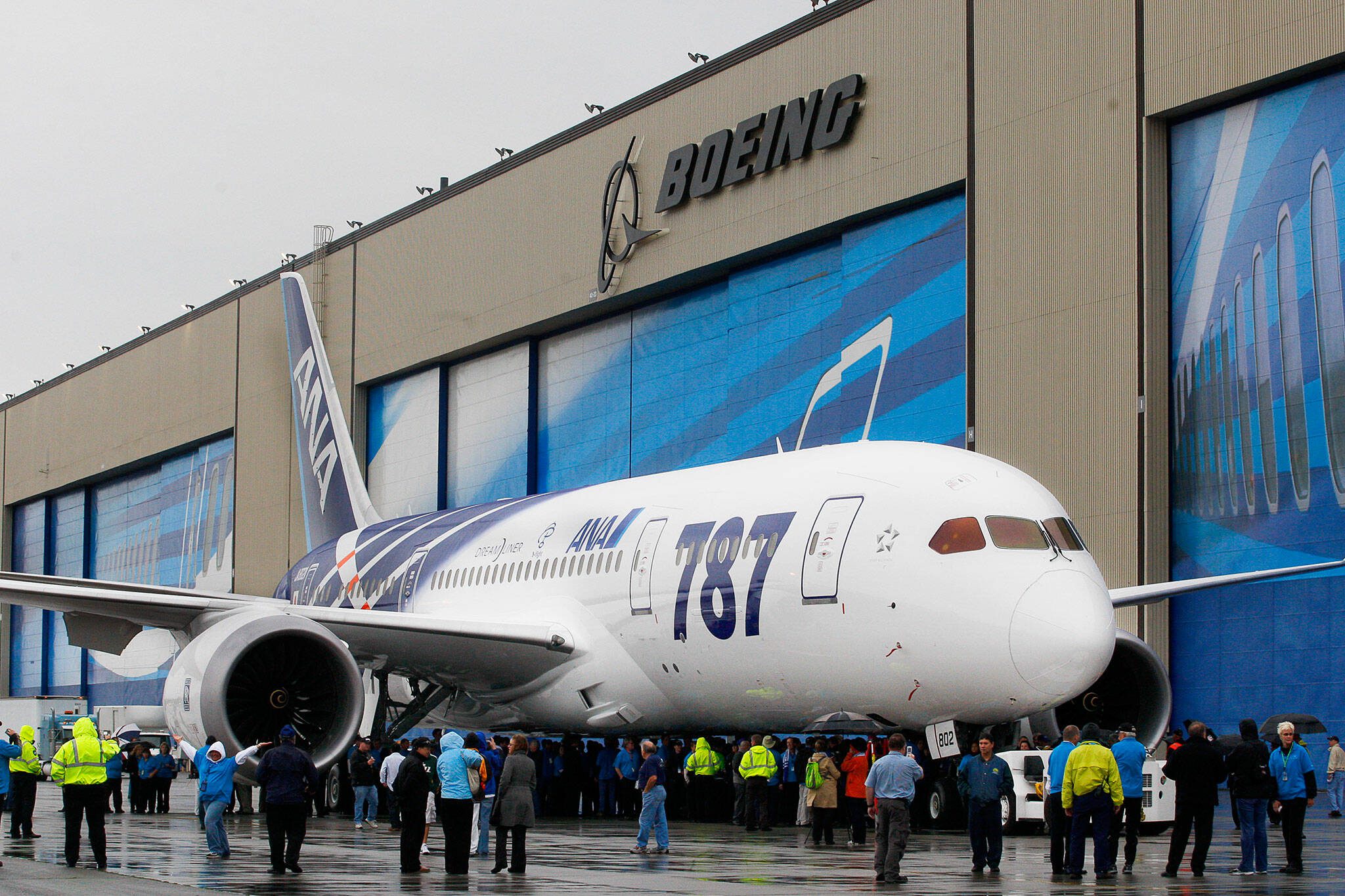EVERETT — An engineer who works at the Boeing assembly plant at Paine Field in Everett is at the center of a new whistleblower complaint alleging the jet maker ignored serious safety and quality control concerns in the construction of the company’s 787 and 777 airplanes.
Sam Salehpour, a Boeing quality engineer, saw the company take shortcuts in the plane’s assembly that “may reduce the life of the aircraft, putting the planes at risk for sudden fatigue failure,” his attorneys posted Tuesday on X, formerly known as Twitter.
He claimed almost 1,000 787s and about 400 777s remain in use despite the risk of structural failure.
Salehpour is represented by Katz Banks Kumin, a Washington D.C.-based law firm. A spokesman for the firm confirmed Tuesday that Salehpour is employed at Boeing’s Everett assembly plant.
The revelations come as Boeing faces heightened scrutiny over its safety standards after a door panel blew off a 737 Max 9 while flying in early January. No one was injured, but the response from federal regulators was swift.
And just last month, another Everett whistleblower, John Barnett, died by an apparently self-inflicted gunshot wound after raising concerns over quality control at the aerospace giant.
In a letter dated Jan. 19 from Katz Banks Kumin to the Federal Aviation Administration, the law firm stated an unnamed whistleblower had “observed shortcuts taken by Boeing in the shimming process” while working on the 787 assembly line in Everett, resulting in “drilling debris left in interfaces and deformation of composite material.”
Shims are tiny gap fillers, as thin as a human hair, used in airplane assembly. According to the whistleblower’s letter, up to 98.7% of gaps over the company’s standard of 0.005 inches “have not been shimmed at all in some sections” on 787s. This could “cause a premature fatigue failure without any warning, thus creating unsafe conditions for the aircraft with potentially catastrophic accidents and passenger fatalities,” the letter says.
The whistleblower also claimed he had “observed that Boeing’s implementation of a new process assembling the 777 without the redesign of relevant parts has lead to a misalignment of parts, which Boeing engineers are pressured to ignore. This too has resulted in serious safety risks.”
The letter came two weeks after the door blowout on the Alaska Airlines flight.
Salehpour identified himself Tuesday as the whistleblower behind the complaint. He has worked at Boeing for 10 years.
According to a New York Times report Tuesday, the FAA is investigating his claims “that sections of the fuselage of the 787 Dreamliner are improperly fastened together and could break apart mid-flight after thousands of trips.”
“Salehpour alleges that a culture exists at Boeing which prioritizes getting planes to market as quickly as possible, despite the known, well-substantiated issues he raised,” Katz Banks Kumin wrote Tuesday on X. “In response to raising these concerns, he was threatened and silenced by Boeing.”
In a statement Tuesday, the company said: “We are fully confident in the 787 Dreamliner,” adding that “these claims about the structural integrity of the 787 are inaccurate and do not represent the comprehensive work Boeing has done to ensure the quality and long-term safety of the aircraft.”
“The issues raised have been subject to rigorous engineering examination under FAA oversight,” Boeing continued. “This analysis has validated that these issues do not present any safety concerns and the aircraft will maintain its service life over several decades. We continue to monitor these issues under established regulatory protocols and encourage all employees to speak up when issues arise. Retaliation is strictly prohibited at Boeing.”
However, on social media, Salehpour’s attorneys Debra Katz and Lisa Banks claimed the company attempted to silence and intimidate him.
“Despite the company’s repeated attempts to intimidate him — and their culture of silence, Mr. Salehpour bravely came forward to alert the FAA, other government officials, and the public,” they wrote.
Salehpour’s attorneys said their client “identified serious safety concerns and did everything possible to bring those concerns to the attention of Boeing officials.”
“Rather than heeding his warnings, Boeing prioritized getting the planes to market as quickly as possible, despite the known, well-substantiated issues Mr. Salehpour raised,” Katz and Banks said in a statement. “The engineering problems identified directly affect the structural integrity of Boeing’s 787 and 777 planes and unless corrected will impact the entire aviation industry and all who fly.”
Salehpour is set to testify before Congress on April 17, according to The New York Times.
Boeing began producing 787 airplanes at the Everett plant in 2007. Fourteen years later, the last Everett-built 787 rolled off the assembly line at the Paine Field factory. Production of the twin-aisle jet was consolidated in South Carolina in March 2021.
The Everett assembly factory employs more than 35,000 people. The plant produces the 777 and 767 models, including the KC-46 Pegasus military tanker and the 777 and new 777X.
The day after door plug the incident, the FAA temporarily grounded all 737 Max 9s to launch a safety inspection. The order was lifted, but fallout surrounding the company’s manufacturing and assembly practices continue. The FAA continues to exert oversight on the company and the Renton-built 737 Max.
In addition, the heads of several major airlines around the globe have also angrily called Boeing out, demanding answers and evidence of improvement.
The door plug incident followed two deadly crashes in 2018 and 2019 involving 737 Max 8 planes. All Max airplanes were grounded for two years while federal safety regulators investigated the crashes, which killed 346 people in all.
Janice Podsada: 425-339-3097; jpodsada@heraldnet.com;
Talk to us
> Give us your news tips.
> Send us a letter to the editor.
> More Herald contact information.

























